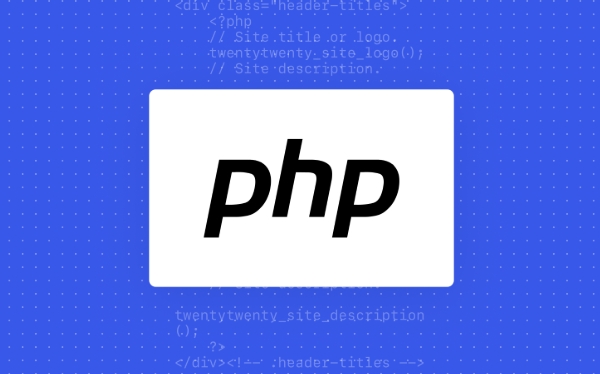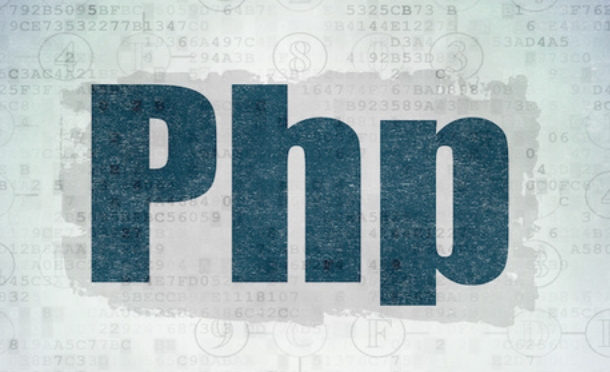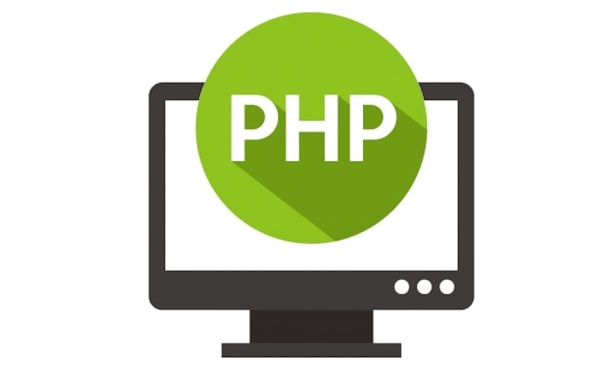To quickly build a stable PHP operating environment, you need to pay attention to the following steps: 1. Install the PHP interpreter, use XAMPP/WAMP for Windows, use Homebrew for macOS, and use apt for Linux; 2. Use a web server, use mod_php or Nginx for PHP-FPM for Apache; 3. Create info.php to test whether PHP is parsing normally; 4. Modify php.ini to enable display_errors, set error_reporting, adjust upload restrictions and time zones; 5. Use an optional Docker method to quickly build a standardized environment through docker-compose.yml. After each step is completed, the service should be restarted and the configuration should be verified to ensure the smooth progress of development and debugging.

Want to quickly build a PHP operating environment? Actually, it is not difficult, but to make it stable and convenient for debugging and development, there are still some details that need to be paid attention to.

Install the PHP interpreter
The first step is to install PHP itself. Different operating systems have different installation methods:

- Windows : You can use integration packages such as XAMPP or WAMP to install Apache, MySQL and PHP in one click.
- macOS : It is recommended to use Homebrew, just execute
brew install php. - Linux (Ubuntu/Debian) : Use apt to install, commands such as
sudo apt update && sudo apt install php.
After the installation is complete, enter php -v to verify whether it is successful. If you see the version number, it means that PHP is in place.
Run PHP with a web server
PHP is a scripting language that requires a web server to handle HTTP requests. There are two common combinations:

Apache mod_php
After installing Apache, enable themod_phpmodule, and then set the processing method of the.phpfile in the configuration file.Nginx PHP-FPM
Nginx does not support PHP natively like Apache, and requires PHP-FPM (FastCGI Process Manager) to handle requests. After installing Nginx and PHP-FPM, modify the site configuration file of Nginx and forward.phprequest to FPM for processing.
Regardless of the method, remember to test whether you can parse PHP files normally. For example, if you create an info.php with the content of <?php phpinfo(); ?> , visiting this page to see the detailed information of PHP means that there is no problem.
Configure PHP environment parameters
The default PHP configuration may not be suitable for development needs. You need to edit the php.ini file to adjust some key parameters:
-
display_errors = On: Turn on error display during development, which is convenient for debugging. -
error_reporting = E_ALL: Report all types of errors. -
upload_max_filesizeandpost_max_size: If you want to do file upload function, these two values ??may need to be increased. -
date.timezone: Set the time zone to avoid warnings.
After modification, restart the web server to make the configuration take effect. The paths of php.ini may be different under different systems. You can use php --ini to view the specific location.
Quickly build an environment with Docker (optional)
If you don't want to toss manually, Docker provides a way to quickly build a standardized PHP environment. You can write a simple docker-compose.yml file, define the mirror versions of PHP, Nginx, and MySQL, and then start the entire environment with one command.
The benefit of this approach is that the environment is clean and isolated, suitable for teamwork or project migration. For example:
version: '3'
services:
php:
image: php:8.2-fpm
Volumes:
- ./code:/var/www/html
nginx:
image: nginx:latest
Ports:
- "80:80"
Volumes:
- ./code:/var/www/html
- ./nginx.conf:/etc/nginx/nginx.conf Run docker-compose up and you can run directly.
Basically that's it. As long as you select the right tools and configure them in place, it is not complicated to build a PHP environment, but some details are easy to ignore, such as permission issues, service not restarted, etc. Just pay more attention.
The above is the detailed content of How to build a PHP runtime environment?. For more information, please follow other related articles on the PHP Chinese website!

Hot AI Tools

Undress AI Tool
Undress images for free

Undresser.AI Undress
AI-powered app for creating realistic nude photos

AI Clothes Remover
Online AI tool for removing clothes from photos.

Clothoff.io
AI clothes remover

Video Face Swap
Swap faces in any video effortlessly with our completely free AI face swap tool!

Hot Article

Hot Tools

Notepad++7.3.1
Easy-to-use and free code editor

SublimeText3 Chinese version
Chinese version, very easy to use

Zend Studio 13.0.1
Powerful PHP integrated development environment

Dreamweaver CS6
Visual web development tools

SublimeText3 Mac version
God-level code editing software (SublimeText3)
 PHP Variable Scope Explained
Jul 17, 2025 am 04:16 AM
PHP Variable Scope Explained
Jul 17, 2025 am 04:16 AM
Common problems and solutions for PHP variable scope include: 1. The global variable cannot be accessed within the function, and it needs to be passed in using the global keyword or parameter; 2. The static variable is declared with static, and it is only initialized once and the value is maintained between multiple calls; 3. Hyperglobal variables such as $_GET and $_POST can be used directly in any scope, but you need to pay attention to safe filtering; 4. Anonymous functions need to introduce parent scope variables through the use keyword, and when modifying external variables, you need to pass a reference. Mastering these rules can help avoid errors and improve code stability.
 How to handle File Uploads securely in PHP?
Jul 08, 2025 am 02:37 AM
How to handle File Uploads securely in PHP?
Jul 08, 2025 am 02:37 AM
To safely handle PHP file uploads, you need to verify the source and type, control the file name and path, set server restrictions, and process media files twice. 1. Verify the upload source to prevent CSRF through token and detect the real MIME type through finfo_file using whitelist control; 2. Rename the file to a random string and determine the extension to store it in a non-Web directory according to the detection type; 3. PHP configuration limits the upload size and temporary directory Nginx/Apache prohibits access to the upload directory; 4. The GD library resaves the pictures to clear potential malicious data.
 Commenting Out Code in PHP
Jul 18, 2025 am 04:57 AM
Commenting Out Code in PHP
Jul 18, 2025 am 04:57 AM
There are three common methods for PHP comment code: 1. Use // or # to block one line of code, and it is recommended to use //; 2. Use /.../ to wrap code blocks with multiple lines, which cannot be nested but can be crossed; 3. Combination skills comments such as using /if(){}/ to control logic blocks, or to improve efficiency with editor shortcut keys, you should pay attention to closing symbols and avoid nesting when using them.
 How Do Generators Work in PHP?
Jul 11, 2025 am 03:12 AM
How Do Generators Work in PHP?
Jul 11, 2025 am 03:12 AM
AgeneratorinPHPisamemory-efficientwaytoiterateoverlargedatasetsbyyieldingvaluesoneatatimeinsteadofreturningthemallatonce.1.Generatorsusetheyieldkeywordtoproducevaluesondemand,reducingmemoryusage.2.Theyareusefulforhandlingbigloops,readinglargefiles,or
 Tips for Writing PHP Comments
Jul 18, 2025 am 04:51 AM
Tips for Writing PHP Comments
Jul 18, 2025 am 04:51 AM
The key to writing PHP comments is to clarify the purpose and specifications. Comments should explain "why" rather than "what was done", avoiding redundancy or too simplicity. 1. Use a unified format, such as docblock (/*/) for class and method descriptions to improve readability and tool compatibility; 2. Emphasize the reasons behind the logic, such as why JS jumps need to be output manually; 3. Add an overview description before complex code, describe the process in steps, and help understand the overall idea; 4. Use TODO and FIXME rationally to mark to-do items and problems to facilitate subsequent tracking and collaboration. Good annotations can reduce communication costs and improve code maintenance efficiency.
 How to access a character in a string by index in PHP
Jul 12, 2025 am 03:15 AM
How to access a character in a string by index in PHP
Jul 12, 2025 am 03:15 AM
In PHP, you can use square brackets or curly braces to obtain string specific index characters, but square brackets are recommended; the index starts from 0, and the access outside the range returns a null value and cannot be assigned a value; mb_substr is required to handle multi-byte characters. For example: $str="hello";echo$str[0]; output h; and Chinese characters such as mb_substr($str,1,1) need to obtain the correct result; in actual applications, the length of the string should be checked before looping, dynamic strings need to be verified for validity, and multilingual projects recommend using multi-byte security functions uniformly.
 Quick PHP Installation Tutorial
Jul 18, 2025 am 04:52 AM
Quick PHP Installation Tutorial
Jul 18, 2025 am 04:52 AM
ToinstallPHPquickly,useXAMPPonWindowsorHomebrewonmacOS.1.OnWindows,downloadandinstallXAMPP,selectcomponents,startApache,andplacefilesinhtdocs.2.Alternatively,manuallyinstallPHPfromphp.netandsetupaserverlikeApache.3.OnmacOS,installHomebrew,thenrun'bre
 Learning PHP: A Beginner's Guide
Jul 18, 2025 am 04:54 AM
Learning PHP: A Beginner's Guide
Jul 18, 2025 am 04:54 AM
TolearnPHPeffectively,startbysettingupalocalserverenvironmentusingtoolslikeXAMPPandacodeeditorlikeVSCode.1)InstallXAMPPforApache,MySQL,andPHP.2)Useacodeeditorforsyntaxsupport.3)TestyoursetupwithasimplePHPfile.Next,learnPHPbasicsincludingvariables,ech






